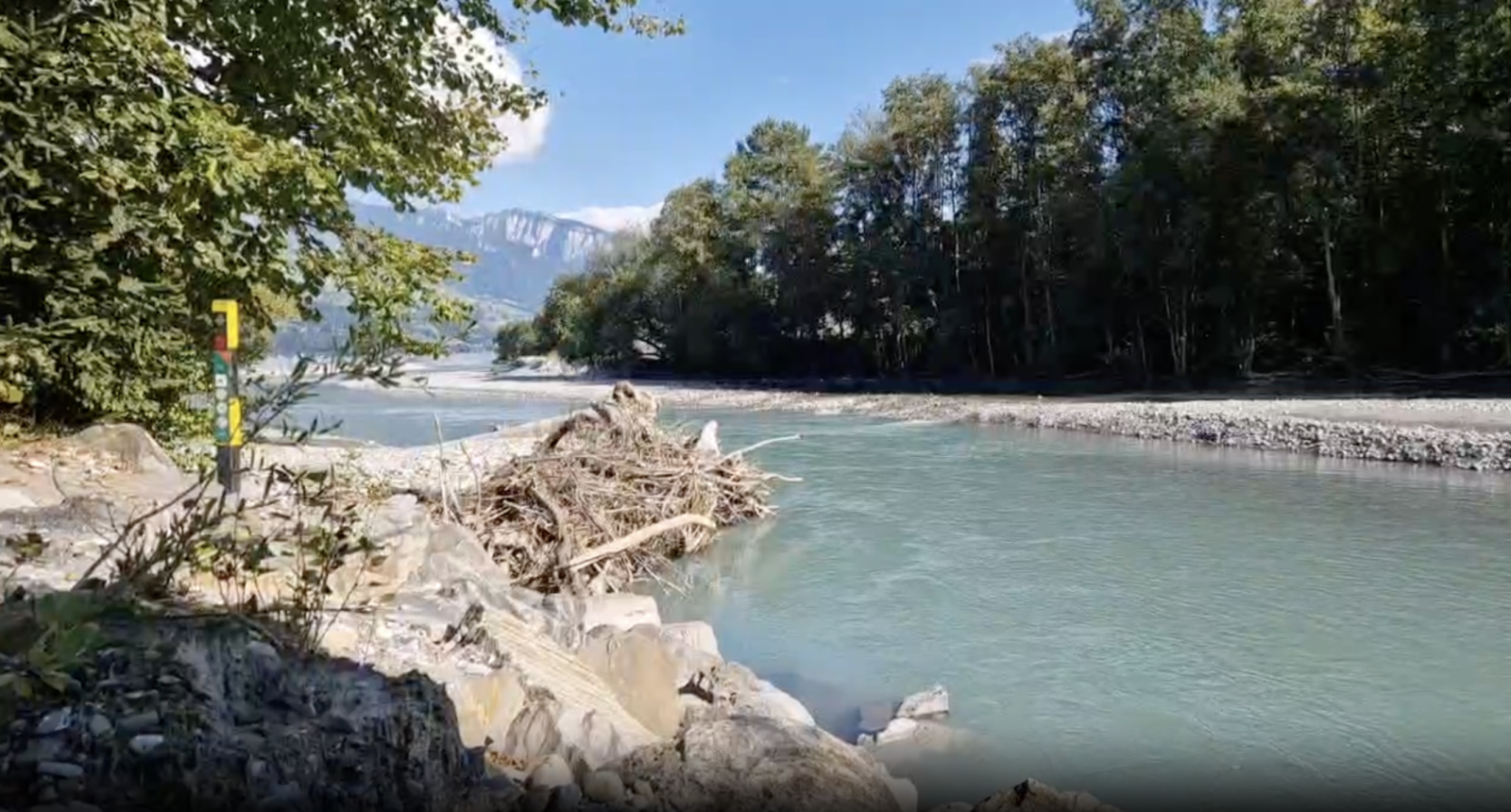Opis
The Kanderdelta is an artificial delta created in the 18th century. Before its construction, the Kander River bypassed Lake Thun entirely. The river deposits substantial amounts of gravel into the delta and the lake, necessitating regular gravel extraction. At the same time, these gravel banks have become one of the few remaining breeding sites for the sieweczka rzeczna in Switzerland.
The delta features a dynamic mix of floodplain forests, still and flowing waters, gravel banks, and steep riverbanks, forming a unique and valuable natural habitat - a rarity in Switzerland. This exceptional ecosystem lies close to the city of Thun, resulting in conflicts between recreational use and conservation efforts. While the lakeshore is accessible year-round, there are even dedicated barbequing areas at the outer edge of the delta. A ranger frequently patrols the area, offering useful information to visitors.
Although the sieweczka rzeczna is the region's flagship species, over 200 bird species have been recorded here. The steep banks provide nesting sites for zimorodek and pluszcz. In the floodplain forests, breeding birds like dzięciołek, kukułka, and possibly kobuz, which can be observed from April to September, find their habitats. wilga (zwyczajna) and słowik rdzawy are relatively common, possibly you might see a ślepowron or czapla nadobna. czapla modronosa has also been observed.
Waders and waterbirds use the delta as a stopover during spring and autumn migrations. The kwokacz is among the most frequent visitors. Other common sightings during migration seasons include łęczak, samotnik, sieweczka obrożna, and biegus malutki. Less common species like kamusznik and biegus mały make appearances. During these times, the reeds are utilized by remiz and błotniak stawowy.
In spring, the delta additionally hosts krwawodziób and batalion, as well as kulik mniejszy and mewa czarnogłowa. Inland, pleszka finds refuge in the floodplain forest. Later in spring and into summer, the świstunka leśna appears here, and over the lake, migrating rybitwa czarna can be spotted. Exceptional sightings include its relatives, the rybitwa białoskrzydła, rybitwa białowąsa, rybitwa białoczelna, rybitwa krótkodzioba, and rybitwa czubata.
In late summer, the rare piaskowiec is occasionally reported, while from September through May, ohar can be seen resting on the lake. Autumn brings irregular sightings of siewnica, followed later by the more frequent biegus zmienny. From winter to spring, Płaskonos and świstun rest on the lake, but rarer birds are also possible, as one sighting of lodówka proves.
The Kanderdelta is also a hotspot for rare waders. Eight confirmed sightings of ostrygojad have been recorded in April and June. Other notable species include biegus rdzawy, szablodziób, sieweczka morska, and kulon (zwyczajny). Additional rarities such as świergotek polny, lodowiec, zaganiacz, siewka złota, skowrończyk krótkopalcowy, płatkonóg szydłodzioby, perkoz rogaty, jaskółka rudawa, wydrzyk ostrosterny, wydrzyk wielki, mewa obrożna, and bekasik have also been observed.
Szczegóły
Dostęp
The Kanderdelta is easily accessible by bus from Thun (stop: Einigen, Kanderbrück). A parking lot is also available a few hundred meters away (Press P on the map). The area can only be explored on foot via a narrow path. This trail is not marked on maps and leads along the strictly protected Kander (1), where the sieweczka rzeczna nests on the gravel banks, through floodplain forests, and past a still water body created by gravel extraction (Unteres Kandergrien), which is often visited by herons (2), to the delta (3).
Depending on the water level, the 30 to 40-meter-wide shoreline strip of the delta can be walked on. However, it’s obviously preferable not to disturb or approach any wading birds that might be present. On the other side of the Kandergrien, there is a meadow for lounging (4) with a good view of the lake, and a kiosk operates there during the warmer months.


